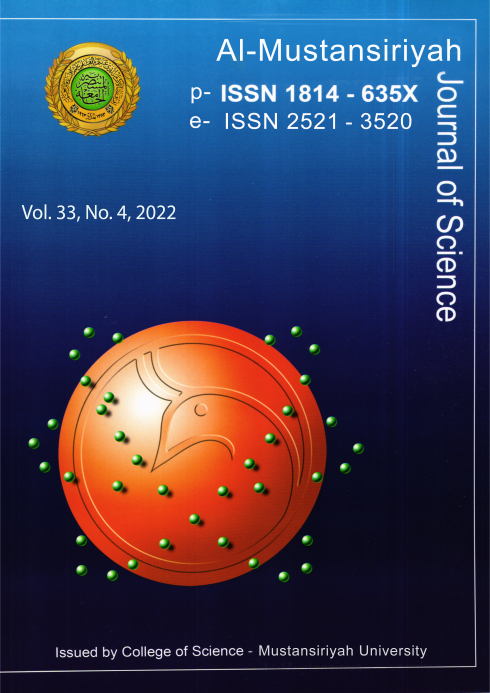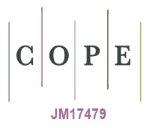Measurement of Radioactive Concentrations and Determination of Isotopes Using Portable Devices for Radiochemistry Laboratories Al-Tuwaitha Nuclear Site in Iraq
DOI:
https://doi.org/10.23851/mjs.v33i4.1159Keywords:
radioactive concentrations, contamination, radiochemistry laboratories, Redeye, Interceptor™ SpecificationsAbstract
The measurements of radioactive concentrations using portable radiological devices for radiochemistry laboratories at the Al-Tuwaitha nuclear site (section C) were studied, section C consists of three laboratories, C1, C2, and C3 were used, Redeye device to measure the radioactive concentrations of alpha and beta emitters, and the Interceptor™ Specifications device to detect radioisotopes. The results showed the presence of radioactive contamination in Unit C distributed over most of its parts. In the C1 laboratory, the highest radioactive contamination was recorded in HCL2 with a concentration of 113.65Bq/cm2. In addition, the C2 laboratory recorded the highest radioactive concentration in FH1 with a concentration of 830.14Bq/cm2 for Beta particle emitters, while the C3 laboratory recorded the highest pollution in FH contamination with a radioactive concentration of 75.26 Bq/cm2. The results show that location C shows the isotopes detected in the laboratory components, such as Cesium 137Cs, Neptunium 237Np, and Americium 241Am. The results showed the presence of contamination on the laboratory floor in the fourth part, contaminated with Americium 241Am and Lutetium 167Lu isotopes. While location B did not record radioactive contamination in most of its parts except for room B8 which recorded radioactive concentrations of about 1.33 Bq/cm2. While location A, that is, no radioactive contamination was recorded, and the readings were within the permissible limits
Downloads
References
J. Feely, "Nifedipine increases and glyceryl trinitrate decreases apparent liver blood flow in normal subjects.," British Journal of Clinical Pharmacol., vol. 17, no. 1, pp. 83-85, 1984.
IAEA, International Atomic Energy Agency, "Joint Radiation Emergency Management Plan of theInternational Organizations," Department of Nuclear Safety and Security, Printed by the IAEA, P.O. Box 100, A-1400 Vienna, 2013.
IAEA, International Atomic Energy Agency,'' Radiation Protection and Safety of Radiation Sources : International Basic Safety Standards''General Safety Requirements Part 3, Vienna, 2014.
K. K. Ali, S. S. Shafik, and H. A. Husain, "Radiological Assessment of NORM Resulting From Oil and Gas Production Processing in South Rumaila Oil Field, Southern Iraq," Iraqi Journal Scientific, vol. 58, no. 2C, pp. 1037-1050, 2017. DOI: 10.24996/ijs.2017.58.2c.8.
IAEA, International Atomic Energy Agency, " Safety assessment for facilities and activities," Safety Standard, GSR4, vol. 4, p. 38, 2016.
R. K. Chesser, B. E. Rodgers, M. Bondarkov, E. Shubber, and C. J. Phillips, "Piecing together Iraq's nuclear legacy," Bulletin of the Atomic Scientists, vol. 65, no. 3, pp. 19-33, 2009.
H Zaidoon, F. Ahmed, K Salam, ''Estimation and Reduction of the Total Activity for the Liquid Wastes Pool in Radiochemistry Laboratories in Al-Tuwaitha Site''. Master Degree Thesis, University of Baghdad College of education for pure science/ibn - al Haitham department of Physics, Iraq, 2018.
R. Dickson, J. Oh Kim, M. Saiful Huq, G. Bednarz, J. Suyama, D. M. Yealy, M. Izadbakhsh, and J. S. Greenberger, "Interceptor and Phantom Trials of EDNS at UPMC," journal of Health Physics, vol. 105, no. 502, p. S199-S208, 2013.
T. Scientific, "User Manual Interceptor TM Spectroscopic Personal Radiation Detector." Oct, 20.
I. T. Al-Alawy and O. A. Mzher, "Radiological characterization of the irt-5000 (14-Tammuz) research nuclear reactor at Al-Tuwaitha nuclear center in Iraq". Environmental Earth Sciences. Vol. 78, issue 6, pp: 1-9, 2019.
ICRP, International Commission on Radiological Protection, ''Statement on Radon'', ICRP, Ref. 00/902/09, 2009.
Downloads
Key Dates
Published
Issue
Section
License
Copyright (c) 2022 Al-Mustansiriyah Journal of Science

This work is licensed under a Creative Commons Attribution-NonCommercial 4.0 International License.
(Starting May 5, 2024) Authors retain copyright and grant the journal right of first publication with the work simultaneously licensed under a Creative Commons Attribution (CC-BY) 4.0 License that allows others to share the work with an acknowledgement of the work’s authorship and initial publication in this journal.






















